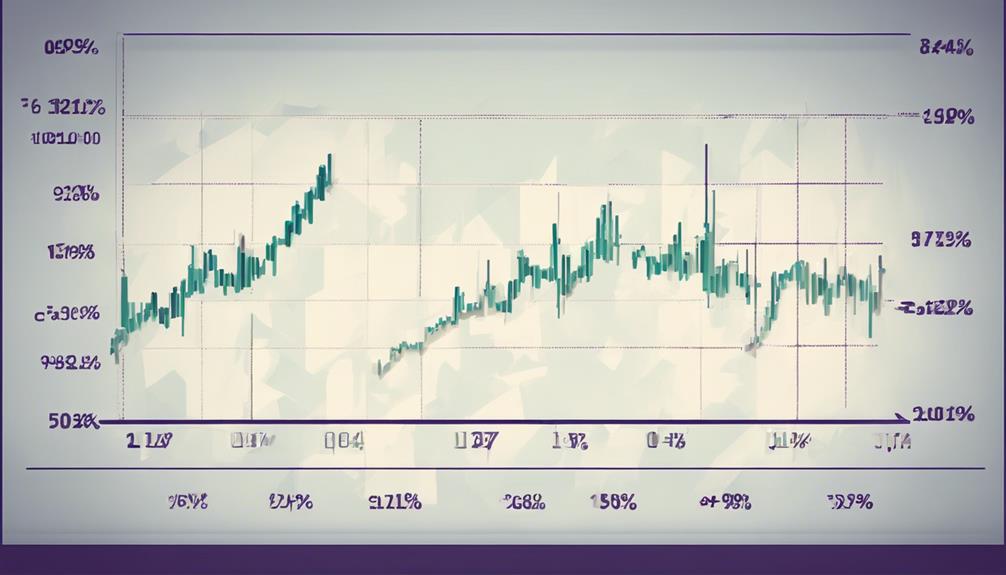Imagine you’re a sailor navigating through turbulent waters – you rely on your compass to guide you safely. Beta serves as a compass in the world of stocks, indicating the volatility and risk associated with a particular investment.
But how can you effectively use this tool to make informed decisions and safeguard your portfolio? Understanding how beta works and its implications for your investments is crucial.
Stay tuned to uncover the key strategies for utilizing beta to evaluate a stock’s risk and enhance your investment prowess.
Understanding Beta and Its Significance
To grasp the concept of beta and its importance in evaluating stock risk, focus on the relationship between a stock’s volatility and the overall market movement. Beta measures how a stock’s price fluctuates in relation to the market as a whole.
A beta of 1 indicates the stock moves in line with the market. If a stock has a beta greater than 1, it’s considered more volatile than the market. Conversely, a beta below 1 signifies lower volatility compared to the market.
Understanding beta helps investors assess the level of risk associated with a particular stock. By analyzing beta, you can gauge how sensitive a stock is to market movements, aiding in making informed investment decisions.
Calculating Beta for a Stock
When calculating beta for a stock, consider the historical price movements of the stock in comparison to the broader market. Beta is a measure of the stock’s volatility in relation to the market, indicating how the stock price tends to move relative to the market index.
To calculate beta, regression analysis is commonly used, comparing the stock’s returns with the market returns over a specific period. A beta of 1 suggests the stock moves in line with the market, while a beta greater than 1 indicates higher volatility, and a beta less than 1 implies lower volatility.
Understanding a stock’s beta helps investors assess its risk level and potential returns in different market conditions.
Interpreting Beta Values
Understanding beta values is essential for investors to gauge a stock’s risk level accurately. A beta of 1 indicates that the stock price moves in line with the market.
If a stock has a beta greater than 1, it’s considered more volatile than the market. Conversely, a beta lower than 1 signifies lower volatility compared to the market. A beta of 0 means the stock’s price movements aren’t correlated with the market.
Negative betas suggest an inverse relationship with the market. Remember, beta values are relative and should be interpreted within the context of the market and the specific industry the stock belongs to, providing insights into the stock’s sensitivity to market fluctuations.
Comparing Beta Across Different Stocks
When evaluating different stocks, comparing their beta values can provide valuable insights into their relative volatility levels. Beta allows you to assess how a stock’s price fluctuates in relation to the overall market.
A beta higher than 1 indicates the stock is more volatile than the market, while a beta lower than 1 suggests lower volatility compared to the market. For example, if Stock A has a beta of 1.5, it tends to move 50% more than the market. In contrast, Stock B with a beta of 0.8 moves 20% less than the market.
Using Beta to Manage Investment Risk
To effectively manage investment risk, utilize beta as a tool to assess the volatility of stocks in relation to the market. By understanding a stock’s beta value, you can gauge how it may perform in comparison to the overall market.
Stocks with a beta greater than 1 are typically riskier but may offer higher returns, while those with a beta less than 1 are considered less volatile. Adjust your portfolio’s risk exposure by balancing high and low beta stocks.
Diversification is key; investing in a mix of stocks with varying beta values can help spread risk. Remember, beta is just one factor in risk management, so consider other metrics and your overall investment strategy when making decisions.
Conclusion
Overall, using beta to evaluate a stock’s risk is a valuable tool for investors. By understanding and calculating beta, interpreting values, and comparing across different stocks, you can better manage your investment risk.
Remember, beta is just one piece of the puzzle when it comes to assessing a stock’s risk, but it can provide valuable insights into how a stock may perform in relation to the overall market.
Keep using beta to make informed investment decisions.



